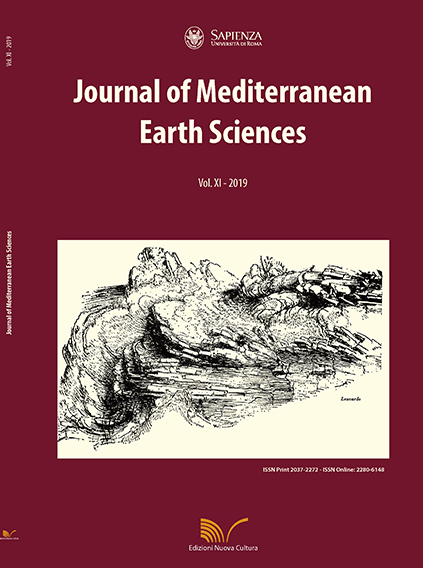The Jurassic Gorgo a Cerbara palaeoescarpment (Monte Nerone, Umbria-Marche Apennine): modelling three-dimensional sedimentary geometries
DOI:
https://doi.org/10.3304/JMES.2019.004Keywords:
photogrammetry, 3D modelling, sedimentary geometries, Umbria-Marche Apennines, JurassicAbstract
In the last decades, methodologies for three-dimensional digitisation of geological outcrops have considerably grown. These methods provide to geologist powerful tools to collect, manipulate and communicate field evidence through the reconstruction of high-resolution digital models, starting from a considerable amount of raw data. Among the different methods and technologies, high-resolution Digital Photogrammetry has proven to be among the most economical and performing methods, with several applications in the field of geology sensu lato, including outcrop visualisation, geological site management, sedimentology, palaeontology, structural geology, geomorphology and applied geology. In this contribution we applied high-resolution Digital Photogrammetry to a key-outcrop from the Umbria-Marche Apennines. The studied site is at Gorgo a Cerbara (Piobbico, PU), where the NW-facing Jurassic escarpment of the Monte Nerone Pelagic Carbonate Platform (PCP) is spectacularly exposed. Starting from a suitable number of photographic images of the outcrop taken for several angulation, we reconstruct a high-definition 3D digital model of the exposed palaeoescarpment. The obtained models returned peculiar sedimentological, taphonomical and stratigraphical details, allowing to visualise the complex sedimentary evolution of a PCP margin. 3D modelling allows to observe and display the geological features from ideally infinite different perspectives, helping in the reconstruction, understanding and communication of complex three-dimensional geometries in a more direct and objective way. The study confirms high-resolution photogrammetric as one of the best low-cost/high-performance method for modelling, visualisation and dissemination in the field of geology sensu lato.
Downloads
Published
How to Cite
Issue
Section
License
The submission has not been previously published, nor is it before another journal for consideration (or an explanation has been provided in Comments to the Editor).


